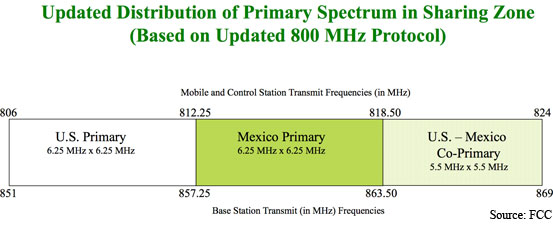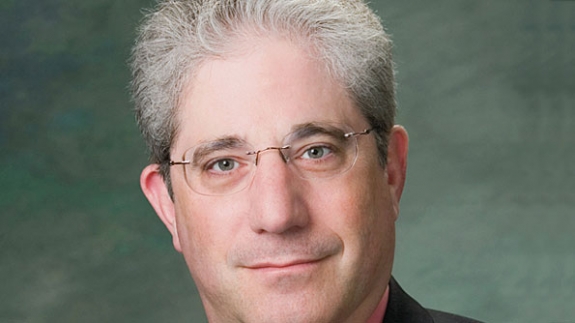What to expect in the U.S.-Mexico rebanding rulemaking
This week, the FCC is due to release a Notice of Proposed Rulemaking that will seek to create rules pursuant to the recently signed treaty between the U.S. and Mexico that enables the 800 MHz rebanding process to finally begin along the southern U.S. border. While the NPRM may change, we have some working knowledge of its contents at this time.
The NPRM strictly deals with the basic rules for the Mexican Border Plan area and will not include the specific frequencies to which licensees in the area will move. The Frequency Proposal Reports (FPR) will be issued after the final rules have been decided.
The Mexican Border Plan differs somewhat when compared with non-border areas. Specifically, while NPSPAC licensees will do a 15 MHz straight drop from their current frequencies (see the attached chart), the middle part of the band will be reserved primarily for Mexican operations. This will require certain alterations to non-NPSPAC licensees’ moves.

Our most recent information is that the NPRM will propose procedures and timing similar to the 800 MHz Canadian Border Plan — for example, a 30-month transition period — but there will be a few twists. Most significantly, the FCC will propose that non-NPSPAC licensees in the Mexican border area no longer will be allowed to utilize offset frequencies, i.e., those that are12.5 kHz away.
Meanwhile, some border licensees that are presently in the middle part of the band (856-861 MHz) may not need to move at all, if offset frequencies continue to be utilized. If any moves are required (including moving away from offsets), it is proposed that Sprint Nextel fund all of the moves. It is important to remember that any public-safety licensees that are not required to move still may need to replace older, NPSPAC-capable radios. So, while they may not need to move their infrastructure, they still may have rebanding work to complete.
Current interleaved licensees in the border area (861-866 MHz) will be split, with non-ESMR licensees moving lower in that part of the band (closer to 861 MHz) and ESMR licensees (i.e., Sprint Nextel) moving to the upper part of the band (closer to 866 MHz). It also is proposed that these licensees cease to use offset frequencies. It is not known at this juncture where the break would be between ESMR and non-ESMR licensees.
The NPRM further proposes that Wave 4 non-border licensees move consistent with the rebanding plan for the rest of the country. Normally, this would mean that non-border interleaved licensees in the 854-859 MHz band would not have to move. However, the FCC will indicate that certain non-border interleaved licensees may need to move to avoid potential interference with relocated border licensees (say, for example, a licensee in Los Angeles potentially being co-channel with a San Diego licensee). The specific incidents of this (if any) will have to wait for the FPRs to be issued.
There are a multitude of questions that licensees will need to consider closely and respond with comments. For example, what is the proposed minimum separation between ESMR and non-NPSPAC public-safety licensees? This issue was inadequately addressed by licensees in the Canadian border portion of this proceeding. Similarly, there are numerous U.S. licensees that received licenses on Mexican primary spectrum, using a Power Flux Density (PFD) showing. There is a significant question as to how and where these licensees will move.
The spectrum moves in this part of the country will be extremely complex, with many moving parts. We are familiar with one Atlanta-area licensee that had to reband their frequencies three times to accommodate all of the various moves in this similarly congested area. Will there also be multiple moves for Mexican border licensees?
It behooves licensees in the area to review the NPRM carefully, learn rebanding lessons from those licensees that have gone through the process, and proactively address interference and equipment-replacement issues. Let the fun begin!
Alan Tilles is counsel to numerous entities in the private radio and Internet industries. He is a partner in the law firm of Shulman Rogers Gandal Pordy & Ecker, and authors the Final Word column in UC’s monthly print edition. He can be reached at [email protected].
What do you think? Tell us in the comment box below.


















